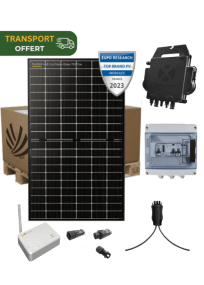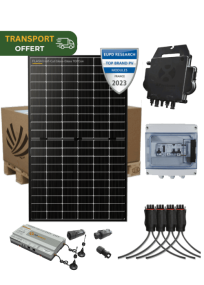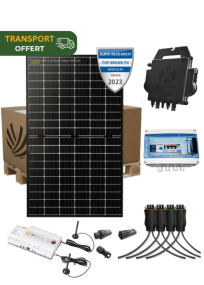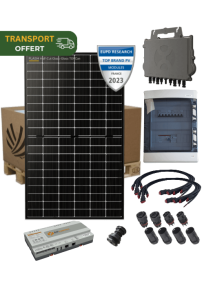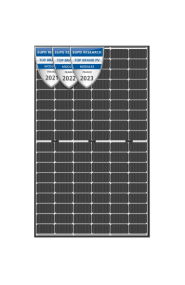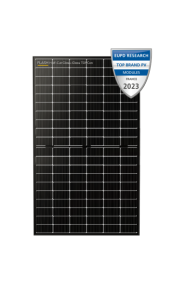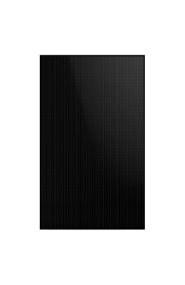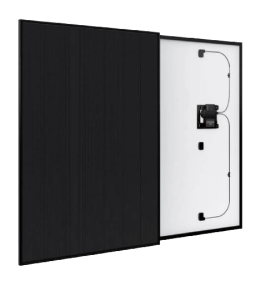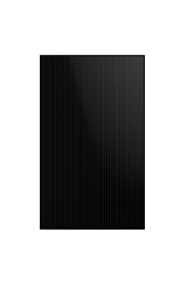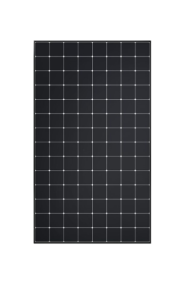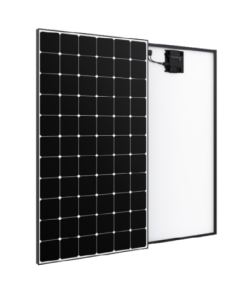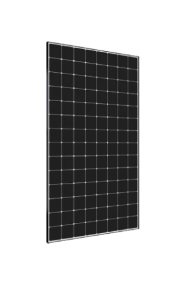Cost and profitability of a photovoltaic installation
Introduction
Regarding the cost for the installation of a solar kit including solar panels, and all of the necessary material, this in the year 2024, you can expect for a power ranging from 3 kWp to 9kWp to cost between 2 000€ and 8 000€ in terms of material costs. In this document, we will be analyzing the different criteria as well as elements of solar kits that affect their price and eventually the profitability of you solar project !
1. The solar panels
In order to understand the cost and profitabiltiy of a solar installation, we first ahve to have a look at the primary product in any solar kit, the solar panel. There are a number of different solar panels, such as monocrystalline solar panels, polycrystalline solar panels, as well as upcoming, more effecient and technologically advanced solar panels such as the monocrystalline Topcon solar panels which are bifacial solar panels beginning to take the market by storm this 2024.
Maximize the return on your solar panels by testing your eligibility for dedicated financial help such as the self-consumption premium, the Obligation to Purchase (OA) system, reduced VAT, or a subsidy from a local authority.
For a thermal installation, expect a cost ranging from 4,000€ to 8,000€ (approximately €900 to €1,700 per m² of collectors). As for a hybrid installation with a power of 3 kWp, the cost is estimated between €13,000 and €15,000.
Important things to consider when choosing your solar panels?
When it comes to choosing the right solar panel for your home, there are a few important factors to consider. Here are some of the key points to keep in mind when selecting your solar panel:
- Efficiency: Solar panels come in a variety of efficiency ratings, so it’s important to consider how much energy your panel will produce. Higher efficiency ratings mean more energy, so look for a panel with a high efficiency rating.
- Cost: Solar panels can be expensive, so it’s important to consider your budget when selecting a panel. Look for a panel that offers the best value for your money.
- Durability: Solar panels need to be able to withstand the elements, so look for a panel that is built to last. Make sure the panel is made of high-quality materials and is designed to withstand extreme weather conditions.
- Warranty: Many solar panels come with a warranty, so make sure you read the fine print before making your purchase. Look for a panel that offers a long warranty period and covers any potential defects.
- Size: Solar panels come in a variety of sizes, so it’s important to consider how much space you have available for installation. Make sure the panel you choose is the right size for your home.
- Location: Solar panels work best in areas with plenty of sunlight, so it's important to ensure that your location is suitable for solar energy.
- Roof condition: Solar panels are typically installed on the roof, so it's important to ensure that your roof is in good condition and can support the weight of the panels.
By considering these factors, you can make sure you select the right solar panel for your home. With the right panel, you can enjoy the benefits of solar energy for years to come.
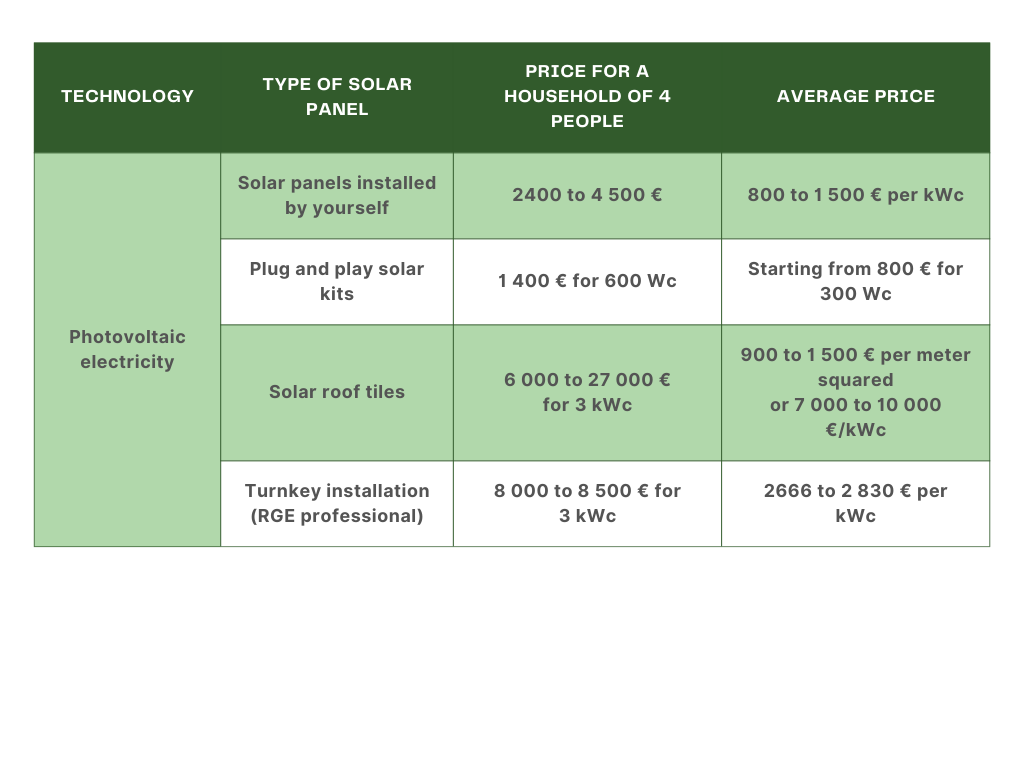
2. The Inverter
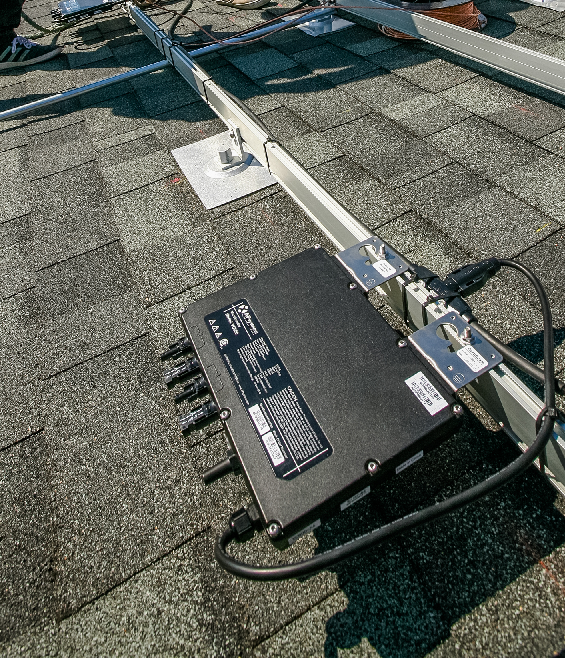
What is a solar-inverter ?
A solar inverter is a device that converts the direct current (DC) electricity generated by solar panels into the alternating current (AC) electricity that is used to power homes, businesses, and the electric grid. The solar inverter is a critical component in any solar energy system, as it allows the electricity generated by solar panels to be used by electronic devices and appliances.
The solar inverter is responsible for ensuring that the electricity produced by the solar panels is usable and can be fed into the electrical grid. Without a solar inverter, the electricity generated by solar panels would be unusable and essentially worthless.
What to take into account when choosing a solar inverter?
Different characteristics must be taken into account to make the inverter suitable for your solar installation. You must choose an inverter according to the power rating of your solar panels, it must be the same for it to work.
An important criterion not to be neglected, if your inverter is too high it will not be able to convert the energy, if it is too low an important energy harvest will not be exploitable.
In addition, the efficiency is a criterion that can be appreciated most often between 95 and 98%, the higher the efficiency is obviously better. Indeed, this shows the amount received that will be exploitable.
Choosing a photovoltaic inverter isn't easy, so we'll guide you through how it works.
First of all, there is the central inverter, which means that a single inverter is connected to all your solar panels. This means a low price, unlike the micro-inverter, which must contain one inverter per panel in majority of the cases.
The central inverter is a good product, but if one panel fails, it stops working because it is connected to all the panels. Unlike micro-inverters, which work even if the control panel fails.
The price of a photovoltaic solar installation
The price of installing photovoltaic solar panels (PV) is expressed according to its peak power (Wp). This measure corresponds to the maximum power that solar panels can generate under ideal sunlight conditions (1,000 W/m²) and temperature (25°C).
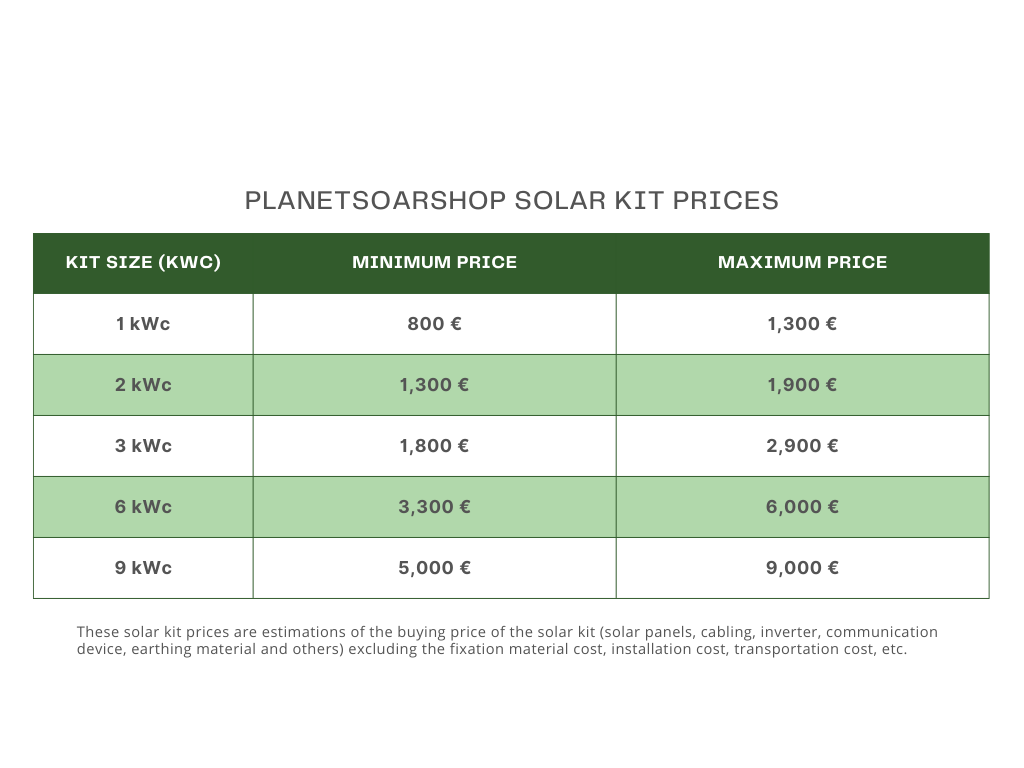
What cost and profitability for 3 kWp of solar panels in self-consumption with surplus sales?
Here is an example of a synthesis of a example of the cost and the profitability of the buying and installing of a 3kWp solar kit :
- Installed power: 3 kWp;
- initial investment: €8,000;
- self-consumption premium: €1,050;
- investment after deducted premium: €6,950;
- EDF OA (01/05/23 to 31/07/2023) partial sale rates: €0.1297/kWh;
- estimated annual production: 3,300 kWh;
- annual consumption: 3,600 kWh;
- self-consumption rate: 40.1%;
This exampling is taking into account a 3% annual increase in the price of kWh incl. tax. With this assumption, owners of this 3 kWp solar panel installation can expect a return on investment in 12 years, with an estimated total of €5,136 received for surplus sales over 20 years, and nearly €9,055 in savings over 30 years.
What cost and profitability for 6 kWp of solar panels in self-consumption with surplus sales?
Here is an example of a synthesis of a example of the cost and the profitability of the buying and installing of a 6kWp solar kit :
- Installed power: 6 kWp;
- initial investment: €12,900;
- self-consumption premium: €1,560;
- investment after deducted premium: €11,340;
- EDF OA (01/05/23 to 31/07/2023) partial sale rates: €0.1297/kWh;
- estimated annual production: 6,790 kWh;
- annual consumption: 7,100 kWh;
- self-consumption rate: 39.7%;
taking into account a 3% annual increase in the price of kWh incl. tax. With these factors, a household installing a 6 kWp photovoltaic system can reasonably expect a return on investment in 9 years. As for the estimate of the amount received for surplus sales over a period of 20 years (average warranty period of a panel, not its lifespan), it would be around €10,568, with nearly €20,664 in savings over a period of 30 years.
What cost and profitability for 9 kWp of solar panels in self-consumption with surplus sales?
Here is an example of a synthesis of a example of the cost and the profitability of the buying and installing of a 9kWp solar kit :
- Installed power: 9 kWp;
- initial investment: €17,400;
- self-consumption premium: €2,340;
- investment after deducted premium: €15,060;
- EDF OA (01/05/23 to 31/07/2023) partial sale rates: €0.1297/kWh;
- estimated annual production: 10,185 kWh;
- annual consumption: 10,700 kWh;
- self-consumption rate: 39.9%;
Taking into account a 3% annual increase in the price of kWh incl. tax. Taking these parameters into account, the household installing a 9 kWp system can reasonably expect a return on investment in 8 years. As for the financial gain allowed by surplus sales over a period of 20 years, it could amount to approximately €9,511, with nearly €26,756 in savings generated over a period of 30 years.
A more in depth look at solar panel prices
In order to better understand the total costs of a solar panel installation, we first have to have a look at the different factors that are responsible for the majority of the total cost to pay:
- Installation price according to the type (labor package): €2,000 to €3,000 for over-roof installation, €3,000 to €4,000 for integrated installation (panels replace the roof covering);
- Solar panel price alone: €200 to €500;
- Inverter price alone: €600 to €3,000 for one inverter, €150 to €350 per micro-inverter;
- Price per peak kilowatt - kWp (including installation): €2,000 to €3,000/kWp for projects with a power of 9 kWp or less; Price per square meter of a PV installation (including installation): €350 to €700/m². The price of a thermal solar installation Thermal solar panels capture solar energy to convert it into heat. Two types of thermal solar installations are distinguished:
The price of a thermal solar installation
Thermal solar panels capture solar energy to convert it into heat. Two types of thermal solar installations are distinguished:
- the individual solar water heater, intended for the production of domestic hot water (DHW), with a price estimated between €900 and €1,700 excluding tax per square meter of installed collectors;
- the combined solar system, designed to provide both heating and/or DHW for a house, with a price ranging between €1,100 and €1,300 excluding tax per square meter of installed solar collectors.
The price of a hybrid solar installation Hybrid solar panels can convert solar energy into both electricity and heat. Whether they are of the air-voltaic type (production of hot air) or hydraulic (production of domestic hot water), these solar panels are estimated to cost between €4,300 and €5,000 per kWp. Here at Planetsoarshop, we exclusively distribute photovoltaic solar panels, and do not have any thermal solar panels.
How do you calculate the profitability of a photovoltaic installation?
Photovoltaic (PV) installations are becoming increasingly popular as renewable energy sources. Understanding the profitability of such projects is crucial for investors and homeowners alike. This article explores the methodology behind calculating the profitability of a photovoltaic installation.
What is a photovoltaic (PV) installation? This question is vital for those looking to understand how solar power can benefit their home or business. PV installations convert sunlight into electricity through solar panels, making them a sustainable and cost-effective energy solution.
-
Cash Flow Analysis : A fundamental aspect of PV profitability is conducting a detailed cash flow analysis. This involves estimating upfront costs, operational expenses, and revenue streams over the system's lifespan.
- Return on Investment (ROI) Calculations : A fundamental aspect of PV profitability is conducting a detailed cash flow analysis. This involves estimating upfront costs, operational expenses, and revenue streams over the system's lifespan.
-
Payback Period Determination : The payback period signifies the time required for cumulative savings to surpass the initial investment. Shorter payback periods indicate faster profitability and higher returns on investment.
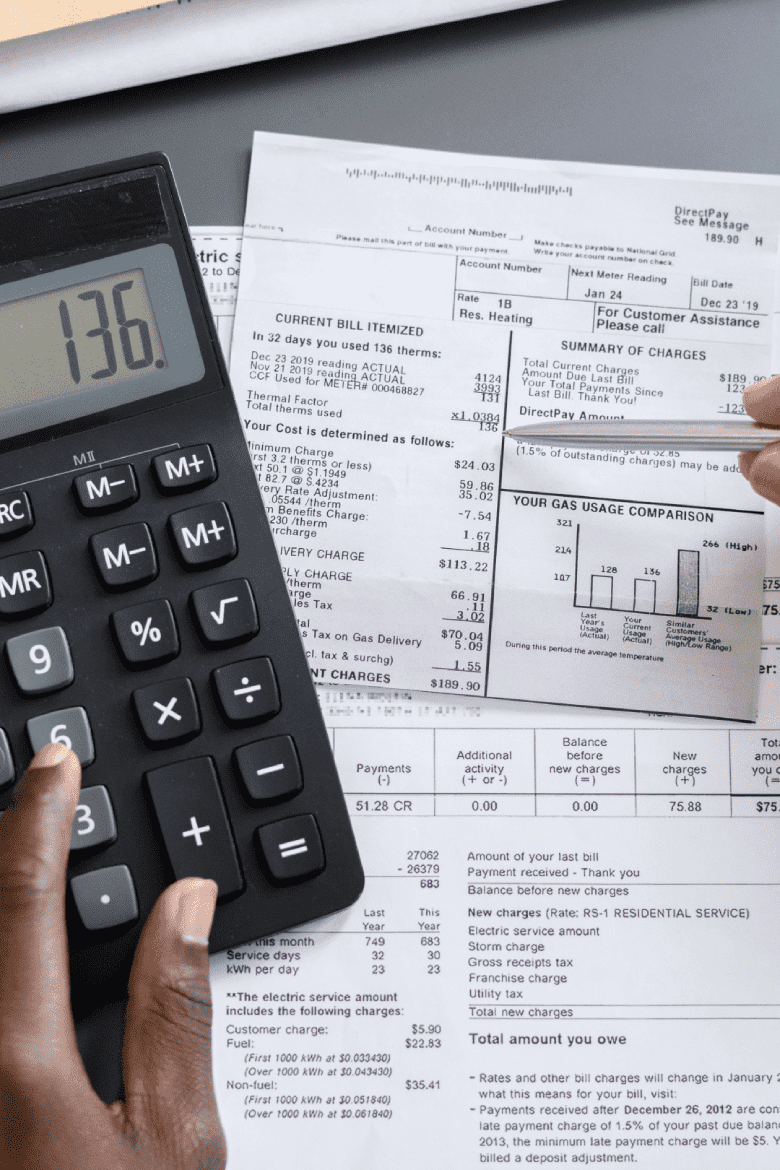
Cost Analysis
Initial Installation Costs
Calculating the upfront costs involves considering solar panel prices, inverters, installation labor, and additional components like mounting systems and electrical wiring.
Operational and Maintenance Expenses
Ongoing operational costs include maintenance, repairs, and monitoring systems. Understanding these expenses is crucial for accurate profitability projections.
Financing Considerations
Financing options such as loans, leases, or power purchase agreements (PPAs) impact the overall cost structure and cash flow, affecting the project's profitability.
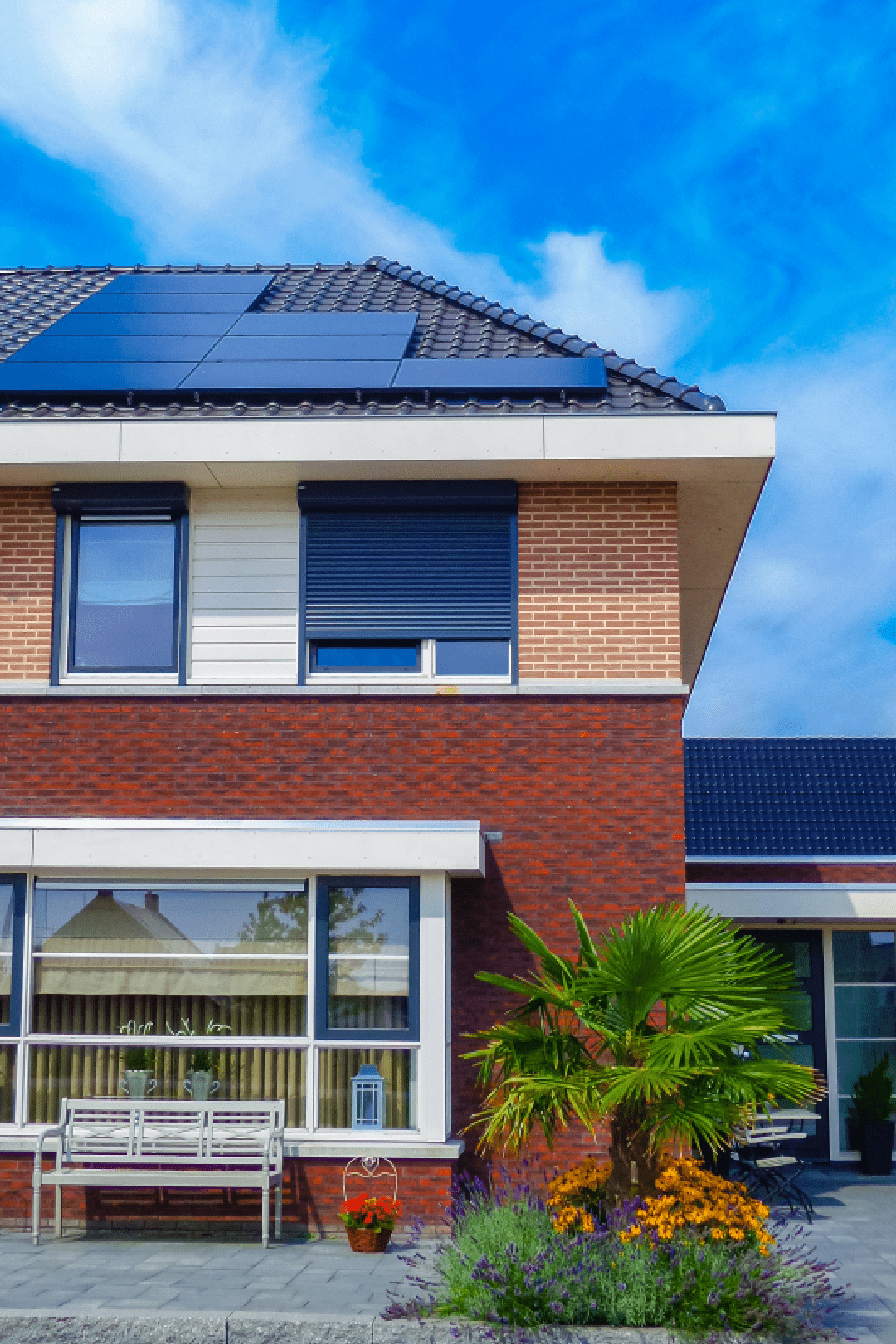
Revenue Generation
Solar Energy Production Estimation
Accurately estimating solar energy production based on location, panel orientation, and local climate data is essential for revenue forecasts.
Feed-in Tariffs and Net Metering
Feed-in tariffs and net metering policies determine how excess energy is compensated, directly influencing revenue streams for PV installations.
Electricity Price Trends
Analyzing electricity price trends helps forecast future revenues, considering potential fluctuations in market rates.
Are Solar Panels Still Expensive in 2024?
Solar panels have become increasingly popular over the years as a renewable energy source that can help reduce electricity costs and environmental impact. However, the upfront cost of solar panels has been a significant concern for many consumers. The question remains: Are solar panels still expensive in 2024?
Current Cost Trends
In recent years, the cost of solar panels has experienced a notable decline, driven primarily by advancements in technology, increased production efficiency, and growing competition among solar panel manufacturers. According to industry reports, the average cost of solar panels has dropped by over 70% in the last decade alone.
Factors Impacting Solar Panel Prices
Several factors influence the cost of solar panels:
-
Technological Advancements: Continued innovations in solar technology have led to more efficient and affordable solar panels.
-
Government Incentives: Many governments offer financial incentives, tax credits, or rebates to encourage the adoption of solar energy, which can significantly reduce upfront costs for consumers.
-
Economies of Scale: As the solar industry continues to expand, economies of scale have contributed to lower manufacturing and installation costs.
-
Global Supply Chains: The availability of raw materials and components used in solar panel production can impact prices.
Frequently Asked Questions (FAQs)
1. Are solar panels worth it financially in 2024?
- Yes, solar panels can still be a wise financial investment in 2024, especially with available incentives and long-term savings on electricity bills.
2. How long does it take to pay off solar panels?
- The payback period for solar panels can vary based on factors like system cost, energy usage, and available incentives. On average, homeowners can expect to break even within 6 to 10 years.
3. Do solar panels increase home value?
- Yes, studies have shown that homes with solar panels tend to have higher property values and can sell faster than homes without solar installations.
4. What are the maintenance costs of solar panels?
- Solar panels generally require minimal maintenance. Routine inspections and cleaning may be necessary, but the costs are usually minimal compared to the overall savings.
5. How long do solar panels last?
- Most solar panels come with warranties ranging from 25 to 30 years. They can continue to generate electricity beyond this period but may produce slightly less power over time.
Article by ;

